Ten Best Rock Debuts of the ’60s
This month I’m spotlighting the greatest rock debut albums of the sixties. With a few exceptions, I’ve chosen the premier efforts from musicians largely unknown before their first release. Each LP was highly influential, consistently strong and not dominated by one or two hits. The most popular acts of the decade–Bob Dylan, The Beatles, and The Rolling Stones–didn’t make the cut, as their debuts were eclipsed by later efforts. Of course, not every musician hits it out of the park on their first try.
Listed by release date to provide a chronological perspective.
The Byrds — Mr. Tambourine Man (June 1965)
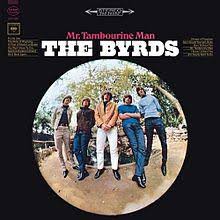 Bob Dylan’s first rock album, Bringing It All Back Home, came out in March of 1965. Three months later, The Byrds put out their debut effort, and the two records combined to launch the folk-rock genre. Mr. Tambourine Man featured four compositions by the Bard of Hibbing: the title track, “Spanish Harlem Incident,” “All I Really Want To Do” and “Chimes of Freedom.” George Harrison liked the group’s cover of Pete Seeger’s “The Bells of Rhymney” so much that he molded it into “If I Needed Someone” on Rubber Soul. Tom Petty built on Roger McGuinn’s twelve-string jangling Rickenbacker guitar sound to powerful effect and covered “I’ll Feel A Whole Lot Better” on Full Moon Fever. Members of The Byrds went on to seed other highly influential bands, most notably Crosby, Stills and Nash and The Flying Burrito Brothers.
Bob Dylan’s first rock album, Bringing It All Back Home, came out in March of 1965. Three months later, The Byrds put out their debut effort, and the two records combined to launch the folk-rock genre. Mr. Tambourine Man featured four compositions by the Bard of Hibbing: the title track, “Spanish Harlem Incident,” “All I Really Want To Do” and “Chimes of Freedom.” George Harrison liked the group’s cover of Pete Seeger’s “The Bells of Rhymney” so much that he molded it into “If I Needed Someone” on Rubber Soul. Tom Petty built on Roger McGuinn’s twelve-string jangling Rickenbacker guitar sound to powerful effect and covered “I’ll Feel A Whole Lot Better” on Full Moon Fever. Members of The Byrds went on to seed other highly influential bands, most notably Crosby, Stills and Nash and The Flying Burrito Brothers.
The Mamas and The Papas — If You Can Believe Your Eyes and Your Ears (February 1966)
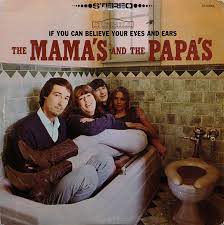 1967 may have included the Summer of Love, but 1966 was the year that John Phillips, Denny Doherty, Mama Cass and Michelle Phillips romanticized California for the entire world with “California Dreamin’.” This wasn’t the surf and sun beach edition of The Beach Boys, but a flourishing hippie version promoting free love, communal living and featuring perfect harmonies even a square could love. If You Can Believe Your Eyes and Your Ears included a Beatles cover (“I Call Your Name”), a celebration of infidelity (“Go Where You Wanna Go”) and the obligatory use of the word “groovy” (“Something Groovy”). It spawned three huge hits, including the chart-topping “Monday Monday.”
1967 may have included the Summer of Love, but 1966 was the year that John Phillips, Denny Doherty, Mama Cass and Michelle Phillips romanticized California for the entire world with “California Dreamin’.” This wasn’t the surf and sun beach edition of The Beach Boys, but a flourishing hippie version promoting free love, communal living and featuring perfect harmonies even a square could love. If You Can Believe Your Eyes and Your Ears included a Beatles cover (“I Call Your Name”), a celebration of infidelity (“Go Where You Wanna Go”) and the obligatory use of the word “groovy” (“Something Groovy”). It spawned three huge hits, including the chart-topping “Monday Monday.”Buffalo Springfield — Buffalo Springfield (December 1966)
 Buffalo Springfield’s debut introduced the world to future superstars Neil Young and Stephen Stills. The first pressing of the album failed to include their protest anthem, “For What It’s Worth,” but that oversight was quickly remedied on a revised edition. The group built on the folk-rock of The Byrds by adding a singer-songwriter component; where Mr. Tambourine Man mixed covers and originals, Buffalo Springfield varied between Stills and Young compositions. They might have only made three records before splitting up, but Buffalo Springfield contained the templates that would make propel Stills’ and Young’s careers for decades and shaped the Southern California singer-songwriter vibe that dominated the charts for years to come.
Buffalo Springfield’s debut introduced the world to future superstars Neil Young and Stephen Stills. The first pressing of the album failed to include their protest anthem, “For What It’s Worth,” but that oversight was quickly remedied on a revised edition. The group built on the folk-rock of The Byrds by adding a singer-songwriter component; where Mr. Tambourine Man mixed covers and originals, Buffalo Springfield varied between Stills and Young compositions. They might have only made three records before splitting up, but Buffalo Springfield contained the templates that would make propel Stills’ and Young’s careers for decades and shaped the Southern California singer-songwriter vibe that dominated the charts for years to come.
The Doors — The Doors (January 1967)
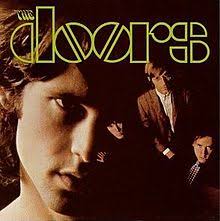 1967 is most often remembered musically for the earth-shaking impact of Sgt. Pepper’s Lonely Hearts Club Band and the acid-rock of San Francisco’s Haight-Ashbury. But the song that most dominated the radio that summer was “Light My Fire,” reaching the top of the charts in late July. Ray Manzarek’s kaleidoscope keyboards and Jim Morrison’s shamanistic lyrics gave the group a truly unique sound, and their debut stands as one of the best of any decade. From the musically-defining opener “Break On Through” through the trippy lullaby of “Crystal Ship” to the shocking, Oedipal angst of closer “The End,” The Doors set a bar the group never reached again even as they repeatedly came close.
1967 is most often remembered musically for the earth-shaking impact of Sgt. Pepper’s Lonely Hearts Club Band and the acid-rock of San Francisco’s Haight-Ashbury. But the song that most dominated the radio that summer was “Light My Fire,” reaching the top of the charts in late July. Ray Manzarek’s kaleidoscope keyboards and Jim Morrison’s shamanistic lyrics gave the group a truly unique sound, and their debut stands as one of the best of any decade. From the musically-defining opener “Break On Through” through the trippy lullaby of “Crystal Ship” to the shocking, Oedipal angst of closer “The End,” The Doors set a bar the group never reached again even as they repeatedly came close.
The Velvet Underground & Nico — The Velvet Underground & Nico (March 1967)
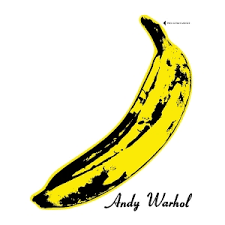 There’s a popular saying that even though only 30,000 people bought The Velvet Underground & Nico, everyone that did started a band. This was the anti-hippie record, birthed at Andy Warhol’s Factory in Manhattan. Pretty much every alternative act that followed–which is to say every alternative act ever–emulated this record to a certain extent, whether by wearing black, romanticizing noncomformity, or embracing originality over accessibility. This wasn’t the flower power of “Get Together,” it was the sordid underbelly of scoring drugs (“I’m Waiting For The Man”) and the resulting addiction (“Heroin”). In abandoning traditional song structure and focusing on the dark underbelly of the counterculture, Lou Reed and his bandmates drew the road map that indie bands have followed ever since.
There’s a popular saying that even though only 30,000 people bought The Velvet Underground & Nico, everyone that did started a band. This was the anti-hippie record, birthed at Andy Warhol’s Factory in Manhattan. Pretty much every alternative act that followed–which is to say every alternative act ever–emulated this record to a certain extent, whether by wearing black, romanticizing noncomformity, or embracing originality over accessibility. This wasn’t the flower power of “Get Together,” it was the sordid underbelly of scoring drugs (“I’m Waiting For The Man”) and the resulting addiction (“Heroin”). In abandoning traditional song structure and focusing on the dark underbelly of the counterculture, Lou Reed and his bandmates drew the road map that indie bands have followed ever since.
The Jimi Hendrix Experience — Are You Experienced (May 1967)
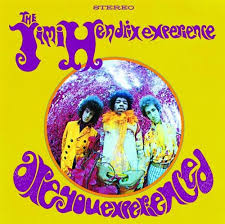 Jimi Hendrix didn’t just reinvent the guitar, he expanded its range in a way that allowed it to run the gamut from peace and love (“Waterfall”) to LSD-inspired existentialism (“I Don’t Live Today”). In the process he leveraged the instrument’s potential for distortion to evoke the anger and the political unrest of his time. It may be surprising in light of the scores of posthumous releases to hear that Hendrix only made three studio records before he died in 1970. Each of those three LPs has its strengths, but only Are You Experienced stands as a powerful introduction to a new artist, one that redefined the power of the electric guitar.
Jimi Hendrix didn’t just reinvent the guitar, he expanded its range in a way that allowed it to run the gamut from peace and love (“Waterfall”) to LSD-inspired existentialism (“I Don’t Live Today”). In the process he leveraged the instrument’s potential for distortion to evoke the anger and the political unrest of his time. It may be surprising in light of the scores of posthumous releases to hear that Hendrix only made three studio records before he died in 1970. Each of those three LPs has its strengths, but only Are You Experienced stands as a powerful introduction to a new artist, one that redefined the power of the electric guitar.
Leonard Cohen — Songs of Leonard Cohen (December 1967)
 Bob Dylan introduced the world to the poetic potential of song lyrics, but Leonard Cohen took that potential to another level (as did Paul Simon, albeit with less consistent results on his debut). Cohen, who had published four books of poetry and two novels prior to his first album at 33, combined highly evocative and sometimes mysterious lyrics with flamenco-like folk guitar to forge new ground in the singer-songwriter genre. It’s no surprise that this record’s “Suzanne,” “So Long, Marianne” and “Hey, That’s No Way To Say Goodbye” have been covered by so many artists in the ensuing years. Cohen’s songs painted pictures that were ripe for interpretation.
Bob Dylan introduced the world to the poetic potential of song lyrics, but Leonard Cohen took that potential to another level (as did Paul Simon, albeit with less consistent results on his debut). Cohen, who had published four books of poetry and two novels prior to his first album at 33, combined highly evocative and sometimes mysterious lyrics with flamenco-like folk guitar to forge new ground in the singer-songwriter genre. It’s no surprise that this record’s “Suzanne,” “So Long, Marianne” and “Hey, That’s No Way To Say Goodbye” have been covered by so many artists in the ensuing years. Cohen’s songs painted pictures that were ripe for interpretation.
The Band — Music From Big Pink (July 1968)
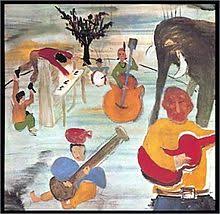 The Band’s debut was a game-changer. The entire Americana movement was birthed in their “Big Pink” house in West Saugerties, New York, and everyone from the Grateful Dead to Eric Clapton mined its inspiration to develop their sound. Unlike many of their musical peers of the time, The Band weren’t trying to change the world or celebrate the power of sex, drugs and rock’n’roll. Instead they embraced tradition and sang about heritage and roots in a completely new way, viewing family and history as things to be cherished, not disavowed. “The Weight” has come to define the decade, thanks in no small part to its use in Easy Rider. Few bands had a single singer with such unique soul and timbre, let alone three: Levon Helm, Richard Manuel and Rick Danko.
The Band’s debut was a game-changer. The entire Americana movement was birthed in their “Big Pink” house in West Saugerties, New York, and everyone from the Grateful Dead to Eric Clapton mined its inspiration to develop their sound. Unlike many of their musical peers of the time, The Band weren’t trying to change the world or celebrate the power of sex, drugs and rock’n’roll. Instead they embraced tradition and sang about heritage and roots in a completely new way, viewing family and history as things to be cherished, not disavowed. “The Weight” has come to define the decade, thanks in no small part to its use in Easy Rider. Few bands had a single singer with such unique soul and timbre, let alone three: Levon Helm, Richard Manuel and Rick Danko.
Led Zeppelin — Led Zeppelin (January 1969)
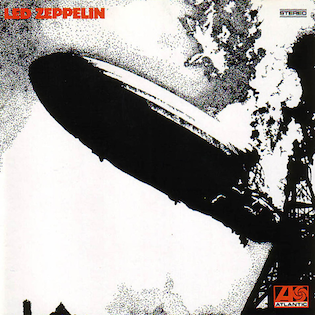 Jimmy Page was already well-known from his stints as a session musician and Yardbirds leader, but Led Zeppelin’s debut was still significant on a number of levels: it took the decibel-level (both vocally and musically) of the British blues movement to new heights, and added a crunch to the guitars that metal and hard rock bands have been sourcing ever since. “How Many More Times” was the first heavy metal song, and the group’s reworking of the folk standard “Babe I’m Gonna Leave You” into a thunderous rock anthem proved that nothing was out of bounds when it came to crafting the stadium rock that dominated the seventies. The first UK pressing of Led Zeppelin, the only one to feature turquoise type on the band name on the album cover, regularly sells for more than $1000.
Jimmy Page was already well-known from his stints as a session musician and Yardbirds leader, but Led Zeppelin’s debut was still significant on a number of levels: it took the decibel-level (both vocally and musically) of the British blues movement to new heights, and added a crunch to the guitars that metal and hard rock bands have been sourcing ever since. “How Many More Times” was the first heavy metal song, and the group’s reworking of the folk standard “Babe I’m Gonna Leave You” into a thunderous rock anthem proved that nothing was out of bounds when it came to crafting the stadium rock that dominated the seventies. The first UK pressing of Led Zeppelin, the only one to feature turquoise type on the band name on the album cover, regularly sells for more than $1000.
Chicago — Chicago Transit Authority (April 1969)
 Long before they descended into MOR and yacht rock, Chicago launched their career with rock that added horns and percussion without abandoning the melodicism necessary to garner commercial success. The group made many great albums throughout their lengthy career, but none topped the debut, which spawned multiple top ten hits (“Beginnings,” “Does Anybody Know What Time It Is” and “Questions 67 & 68”). In an age known for excess, Chicago went above-and-beyond: their first four records were multi-album sets. All these years later, the tepid “If You Leave Me Now” may be their most well-known hit, but in their early days Chicago rocked hard and incorporated a horn section to create a sound both unique and refreshing.
Long before they descended into MOR and yacht rock, Chicago launched their career with rock that added horns and percussion without abandoning the melodicism necessary to garner commercial success. The group made many great albums throughout their lengthy career, but none topped the debut, which spawned multiple top ten hits (“Beginnings,” “Does Anybody Know What Time It Is” and “Questions 67 & 68”). In an age known for excess, Chicago went above-and-beyond: their first four records were multi-album sets. All these years later, the tepid “If You Leave Me Now” may be their most well-known hit, but in their early days Chicago rocked hard and incorporated a horn section to create a sound both unique and refreshing.


